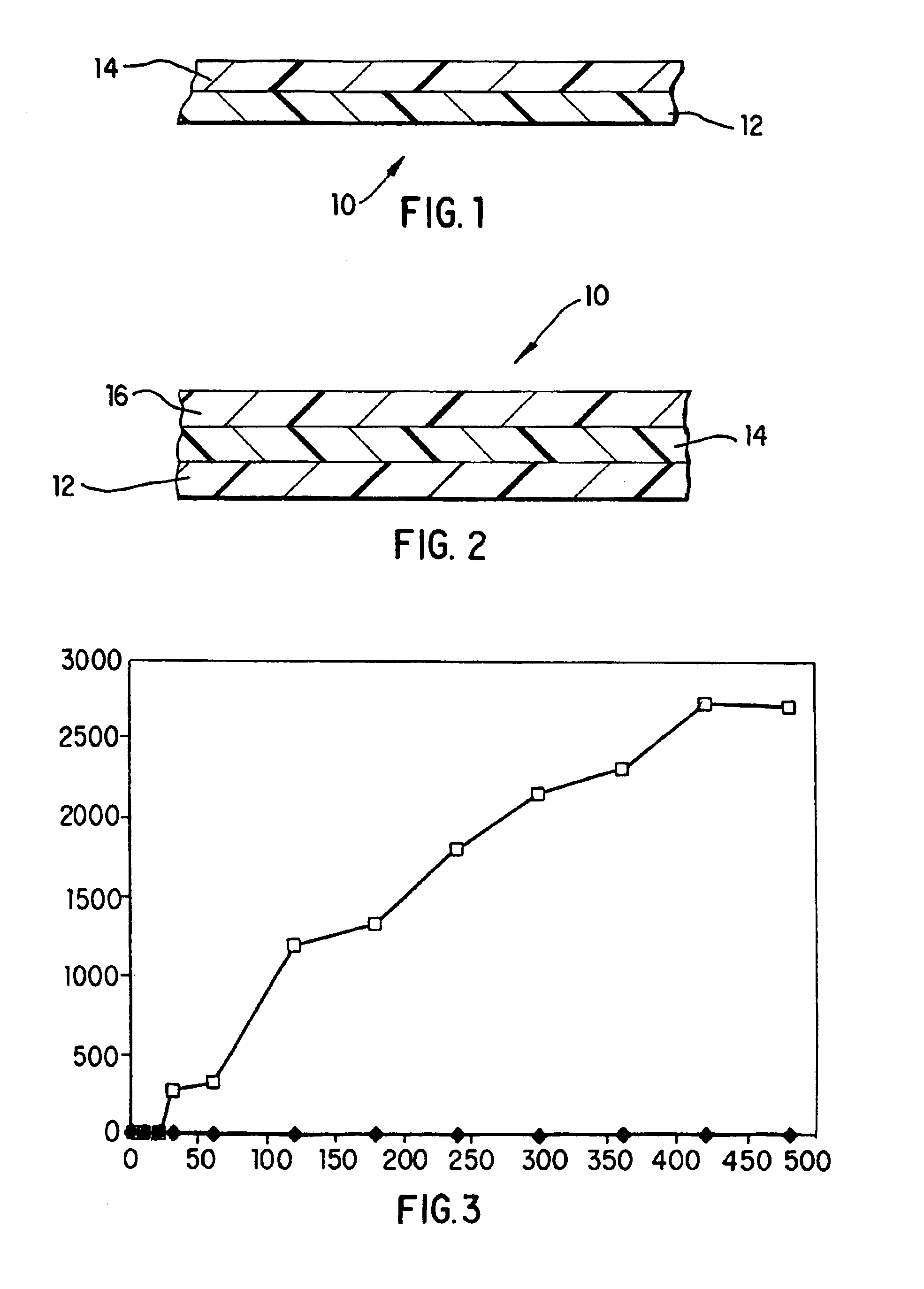Poly(lactic acid) in oxygen scavenging article
a technology of oxygen scavenging and polylactic acid, which is applied in the field of compositions, articles or methods for scavenging oxygen, can solve the problems of affecting the scalability of oxygen scavenging articles, the need for additional packaging operations, and the degradation of the transparency of the wall, so as to reduce the migration of an organoleptically significant compound
- Summary
- Abstract
- Description
- Claims
- Application Information
AI Technical Summary
Problems solved by technology
Method used
Image
Examples
Embodiment Construction
[0038]The invention can be used to make various articles of manufacture, compounds, compositions of matter, coatings, etc. Three preferred forms are: sealing compounds or gaskets; a polymeric functional barrier coating on an oxygen scavenging lacquer; and flexible films, all useful in packaging of food and non-food products.
[0039]It is known to use sealing compounds in the manufacture of gaskets for the rigid container market. Large, wide diameter gaskets are typically made using a liquid plastisol. This plastisol is a highly viscous, liquid suspension of polymer particles in a plasticizer. In the manufacture of metal or plastic caps, lids, and the like, this liquid plastisol is applied to the annulus of a container such as a jar, and the container with the applied plastisol is “fluxed” in an oven to solidify the plastisol into a gasket. The result is a gasket formed around the annulus of the container.
[0040]Smaller gaskets are typically made for use in beer crowns in bottles. A pol...
PUM
| Property | Measurement | Unit |
|---|---|---|
| transparency | aaaaa | aaaaa |
| temperature | aaaaa | aaaaa |
| heat sealable | aaaaa | aaaaa |
Abstract
Description
Claims
Application Information
 Login to View More
Login to View More - R&D
- Intellectual Property
- Life Sciences
- Materials
- Tech Scout
- Unparalleled Data Quality
- Higher Quality Content
- 60% Fewer Hallucinations
Browse by: Latest US Patents, China's latest patents, Technical Efficacy Thesaurus, Application Domain, Technology Topic, Popular Technical Reports.
© 2025 PatSnap. All rights reserved.Legal|Privacy policy|Modern Slavery Act Transparency Statement|Sitemap|About US| Contact US: help@patsnap.com


